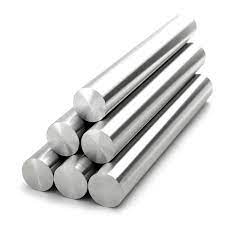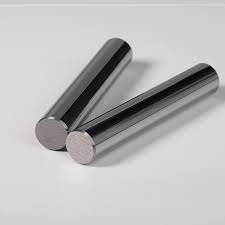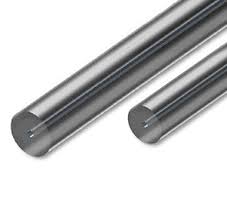Carbide rod blanks are essential components used in various industries, particularly in the manufacturing of cutting tools. These blanks are known for their exceptional hardness, wear resistance, and ability to withstand high temperatures. In this article, we will delve into the manufacturing process of carbide rod blanks, exploring the steps involved and the techniques used to create these high-performance components.
I. Raw Material Selection
The first step in the manufacturing process of carbide rod blanks is the careful selection of raw materials. Tungsten carbide powder, which is the primary ingredient, is mixed with a binder material such as cobalt or nickel. The quality and composition of these materials play a crucial role in determining the final properties of the carbide rod blanks.

II. Powder Mixing
Once the raw materials are selected, they are thoroughly mixed to ensure a homogeneous distribution of tungsten carbide particles within the binder matrix. This mixing process is typically carried out in a ball mill or a specialized mixer, where the powders are blended to achieve a consistent composition.
III. Compaction
After the powder mixing stage, the blended material is compacted into a desired shape. This is typically done using a hydraulic press, where the powder mixture is placed into a die cavity and subjected to high pressure. The pressure helps in achieving the desired density and shape of the carbide rod blanks.
IV. Pre-Sintering
The compacted carbide rod blanks undergo a pre-sintering process to remove any organic binders and to partially fuse the tungsten carbide particles together. This step is crucial in enhancing the strength and integrity of the blanks before the final sintering process.

V. Sintering
Sintering is the most critical stage in the manufacturing process of carbide rod blanks. The pre-sintered blanks are placed in a high-temperature furnace, where they are subjected to extreme heat and pressure. This process causes the tungsten carbide particles to bond together, forming a dense and solid structure. The sintering temperature and duration are carefully controlled to achieve the desired hardness and mechanical properties.
VI. Grinding and Finishing
After sintering, the https://www.diatooling.com/solidcarbide-rod.htmlundergo grinding and finishing processes to achieve the required dimensions and surface finish. Precision grinding machines are used to remove any excess material and to ensure the blanks meet the specified tolerances. This step is crucial in achieving the desired shape and accuracy of the final product.
VII. Inspection and Quality Control
Once the grinding and finishing processes are complete, the carbide rod blanks undergo rigorous inspection and quality control measures. Various tests, such as dimensional checks, hardness testing, and metallurgical analysis, are conducted to ensure that the blanks meet the required specifications and standards.
VIII. Coating (Optional)
In some cases, carbide rod blanks may undergo a coating process to enhance their performance. Coatings such as titanium nitride (TiN) or titanium carbonitride (TiCN) are applied to improve wear resistance, reduce friction, and extend tool life.

Conclusion
The manufacturing process of carbide rod blanks involves several intricate steps, from raw material selection to final inspection. Each stage is crucial in determining the quality, performance, and durability of these essential components. Understanding this process provides valuable insights into the complexity and precision involved in producing carbide rod blanks, which are widely used in the manufacturing industry for high-performance cutting tools.









Comments (0)